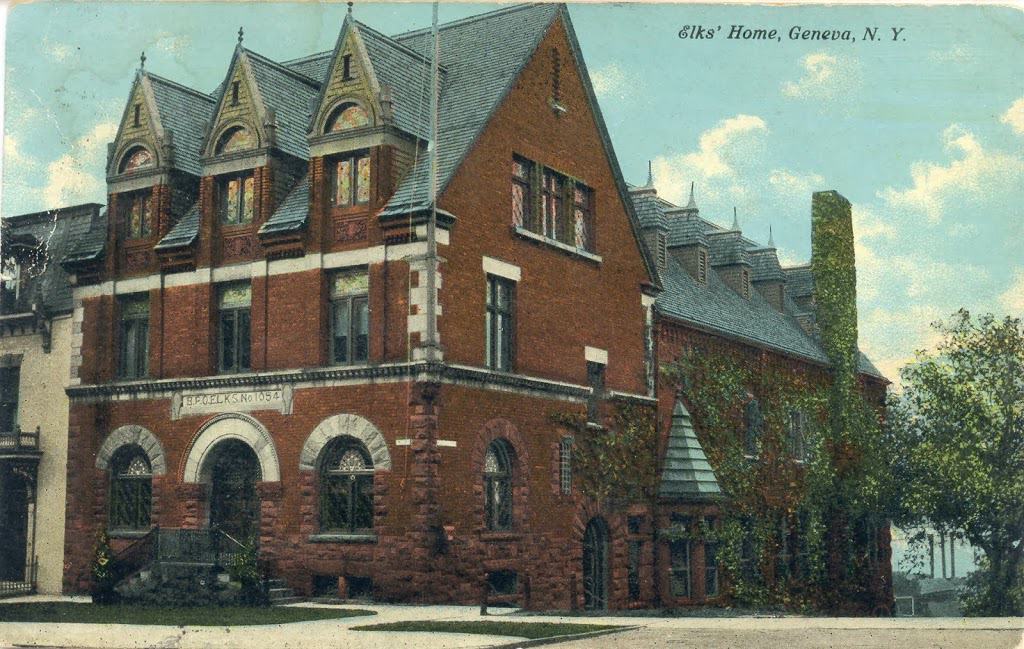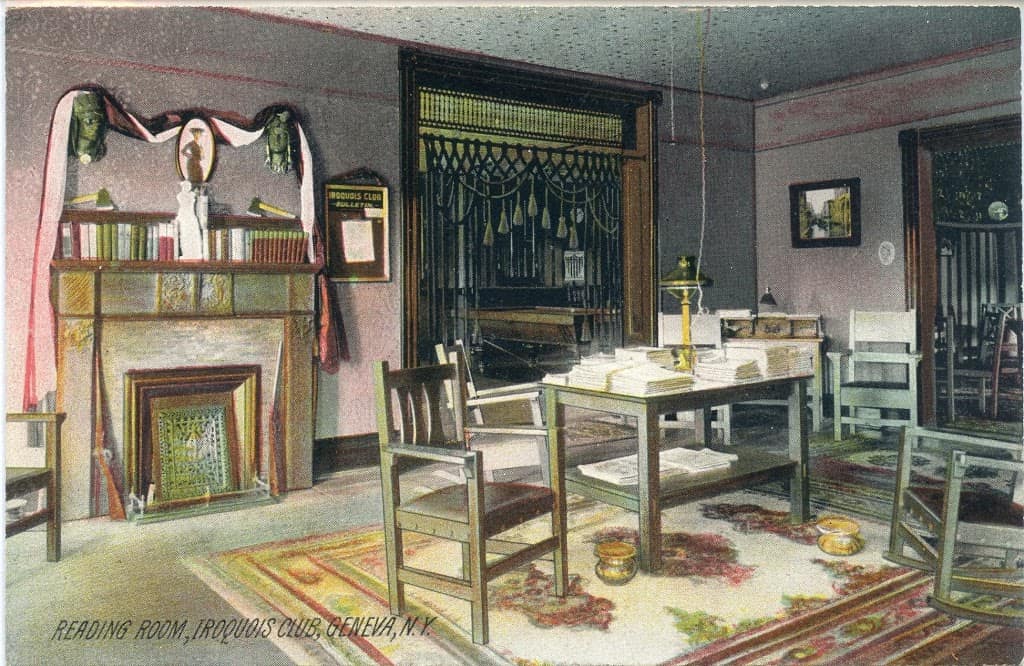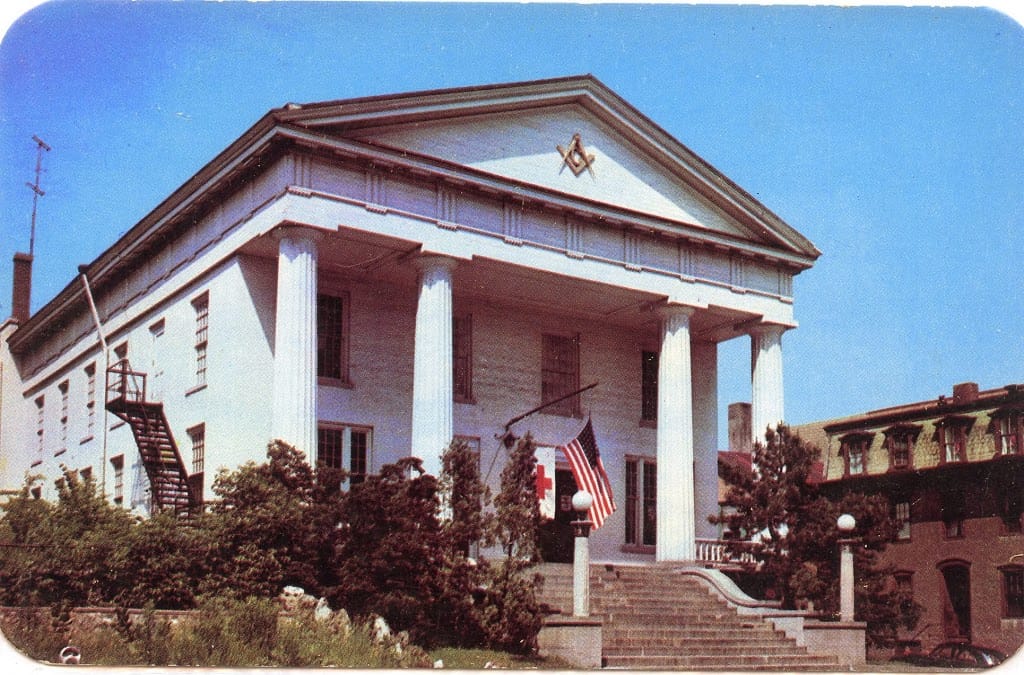Clubs, Associations, Organizations: Networking in the 1920s
By Karen Osburn, Archivist
There was a commercial that had the tag line “you’ve come a long way, baby” which some folks might think applies to the way people network now versus the 1920s. Networking now is done on “social sites” like Facebook, LinkedIn, Pintrest or Twitter (to name a few). We put our photos up on-line using Shutterfly, Flickr, or SmugMug. We can talk to each other “face to face” via Facetime or Skype and if you don’t mind the lag in time it is almost like being in the same room.
However, in the 1920s networking really meant being in the same room and participating in verbal conversations. Many people (men especially) belonged to fraternal or service organizations. Often these organizations or clubs used rituals to bind their members together. Organizations like the Masons, Foresters, Fraternal Order of Eagles, Knights of Columbus, the Elks, the Moose, the Independent Order of Odd Fellows and Kiwanis Club competed with Masonic Lodges, Eastern Star, military groups, religious and ethnic organizations for members. Add 1920s community organizations like the Boy Scouts of America, Business Women’s Club, and various book groups, art clubs and sewing circles and America was a country of “joiners.”
The 1925 Geneva City Directory lists 48 societies, associations, organizations, and military groups, religious and benevolent organizations. The book clubs, art clubs, and sewing circles are not even mentioned and their inclusion would certainly make the number much higher. Both men and women could be out socializing at clubs or meetings every night of the week if they were so inclined.
Many joined service organizations like Zonta, Rotary, Kiwanis, or Lions. Some opted for fraternal organizations such as Masons, Elks, Moose, Eagles, or D.A.R. The basic difference between the two groups was fraternal groups looked out for the welfare of their members while service groups worked at making a difference in their neighborhoods and communities.
Many of them began as all white male organizations and gradually added women and minorities so that many of these groups are very integrated today. But, some groups such as Masons (all male) and Zonta (all female) are still sexually segregated. Some groups remain staunchly one ethnicity even if the “rule” is unspoken.
In the 1920s two service groups started chapters in Geneva. The Geneva Kiwanis Club organized on May 27, 1921 with 53 charter members and the Geneva Zonta Club organized on May 1, 1929 with 12 charter members. Kiwanis International is a group that works to serve children and Zonta International is an organization of executives and leaders who advocate the advancement of women. These two service organizations joined a collection of established clubs in Geneva that included Elks, Odd Fellows, Masons, Macabees, Woodsmen and many more. In the days before, television, computers, and digital social networks these organizations were how you were entertained, met people with similar interests, established business connections and got to know your neighbors. Many fraternal organizations, like Modern Woodsmen of America, were founded with the idea of helping their “brethren” in times of illness and death, much like insurance. They were not the same as service groups like Rotary, which were founded to help their community, members and non-members alike.
Today, many of these clubs and organizations are gone or merged due to lack of interest on the part of the public. Some groups like the Masons, Rotary, Geneva Women’s Club, and Fortnightly Club continue to be well attended and some communities are more supportive of service organizations, private clubs and fraternal organizations than others.
In our archive there is no directory comparable to the 1925 Geneva Directory that lists all the cubs, associations and organizations, but the yellow pages of the 2013-14 Verizon directory list 14 clubs only 4 of which are in Geneva. There are other organizations whose meetings circulate among member’s homes and so do not have a phone number or address to list, but you can see that the number of groups has dropped drastically from the 48 listed in 1925.
I have nostalgic feelings for those days when family life revolved around personal interaction with friends and acquaintances, but there are a lot of positive things to be said about the new social media sites too. Where else do I get to see photos of my niece’s Halloween costume 10 minutes after she puts it together, or a friend’s new born baby, or my other friend’s new puppy just minutes after it comes home? How else can I get a tour of my friend’s home in Kansas without flying out there and have it narrated by him at the same time? One way or other humans find a way to communicate and socialize; however, it often changes with each generation. Enjoy networking! It binds communities together!
Did you enjoy this 1920s moment? The Geneva Historical Society is hosting several workshops and programs in December and January about the 1920s all leading up to our Speakeasy Party at Belhurst on Friday, January 17, 2014. For more information about the Speakeasy or related programs, call us at 789-5151 or visit www.historicgeneva.org.




That helped me a lot! Exactly what I was looking for. Thanks again!
Best Fraternal Organizations
Have you ever come across what I read was referred to a “fraternal order” called the Seven Wise Men. I believe it was in Ohio in the 1920’s but I can’t find any information. The only clue I have comes from a book written by Dick Burdette called the Man Who Limped. It’s not a well edited book but it’s about unsolved murders in the Southern Ohio town of Portsmouth, Ohio, where I grew up in the 50’s and 60’s.
Thank you in advance for any information you may have.
I will pass your request on to Karen.
Anne
HI,
As I understand it the difference between a social club and a fraternal organization is that a fraternal organization is governed by Roberts Rules of Order and has By-Laws to follow. It seems to be more structured.
I am sure social clubs have some rules or procedures to follow. However I feel they may be less structured and possibly run according to whom ever is running it.
An old family picture came up in my daughter’s search on Ancestry. She forwarded it to me. My great grandpa was matron of an organization with the initials W.P.S.I.K. I was curious what this might have been. The photo had officers listed: as President, Board of Health, Chaperon, Overseer of the Poor, Chief Detective Bureau and Matron. He comes from the Pennsylvania (Dutch/Deutsch) area. I was wondering if you have ever heard of such an organization. I am assuming it was late 1910s to 1920s sometime.
The city directories of that time listed associations, clubs, etc. but none match those initials. I’ve seen ribbons for similar “alphabet soup” clubs with similar officers. I think such things were an inside joke, possibly of a larger group, but I don’t know for sure. It would be fun to find out.
Desperately trying to remember an old order like the Musser Elks it starts with a P something like pygmalion??
I did a quick check of our Geneva directories in the late 19th and early and mid-twentieth centuries and all I found was the Knights of Pythias in 1894. This organization was founded in Washington, DC in the midst of the Civil War and still exists today. It has a website with more information.
I have come across some photos in the Historical Archives of Manatee County Fl from the 1920s. One is a “Group portrait of the ladies of the E.T.C. Club. The E. T. C. Club was a woman’s club in the early 1920s.” I can find no other reference to this club and was hoping someone here could tell us more. Thanks in advance
If you are looking for information relating to Geneva, Florida, you are in the wrong place. This site is for the history of Geneva, New York.
What might U.C.T.. stand for on what looks like a fraternal organization medallion? It also says Geneva No. 427 on it. It belonged to my late husband’s grandfather, Harry W. Bennet of the Bennet Funeral Home, whose name and 1930 are engraved on the back.
It stands for the Order of United Commercial Travelers. Council 427 is listed in the 1931 Geneva Directory, the period Karen wrote about here in which fraternal organizations were growing. According to Wikipedia, the UCT began as an organization for traveling salesmen and provided accident and death benefits. Perhaps that motivated your relative’s membership, since he wasn’t a salesman. However, if the article is accurate, the organization seems to have evolved into a more typical fraternal order devoted to community social service. This also could have been the reason for Mr. Bennett’s membership.
Correction: the last name spelling should be Bennett. I didn’t catch that mistake until it was too late to edit.
What is know of the Eagles Club that was on Exchange St. At the turn of the century ? Thx
From what we can tell from a quick search of the newspapers and directories, it appears to be the meeting place of the Fraternal Order of Eagles Geneva Aerie who were founded about 1900. This group had meeting rooms on Seneca and Castle over the years. Eagles Hall/Club hosted dances, boxing matches (Dan Deegan hosted his matches there), and other events. They participated in sports leagues, especially quoits. The Club doesn’t appear on Exchange Street until the late 1940s and does not appear in the paper much after that.